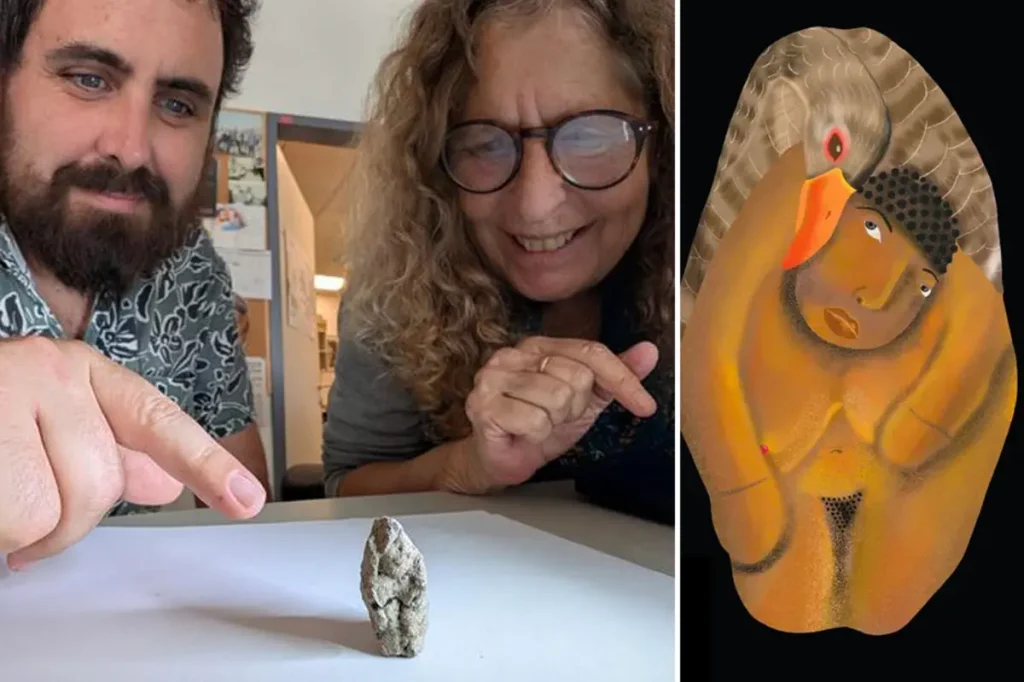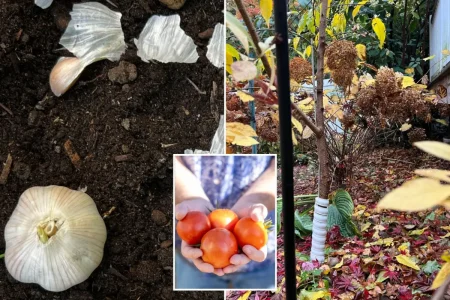When Ancient Art Gets Risqué: A 12,000-Year-Old Mystery from Israel
Archaeological discoveries often reveal fascinating glimpses into our ancestors’ lives, but occasionally they uncover something so unexpected that they challenge our understanding of ancient cultures entirely. Such is the case with a remarkable recent find from northern Israel – a tiny clay figurine that appears to depict an intimate encounter between a woman and a goose. This peculiar artifact, no larger than a postage stamp, may represent the oldest known depiction of human-animal interaction of a sexual nature ever discovered.
The figurine was unearthed at the Nahal Ein Gev II archaeological site in northern Israel, alongside other clay fragments from the Natufian period. Despite its diminutive size, the details are unmistakable to researchers who have studied it closely. The artifact depicts a nude woman bent forward with what appears to be an oversized goose mounting her from behind. The clay figure clearly shows carved breasts and a triangular pubic area on the human figure, while the goose’s beak gently touches the back of the woman’s head in what researchers describe as resembling a lover’s intimate gesture. To help others visualize these easily-missed details, the archaeological team created an illustration highlighting the figurine’s key features – an image that has raised eyebrows among both academics and the public. While some have suggested more innocent interpretations, such as a woman carrying a freshly hunted bird, the positioning and animation of the goose figure strongly suggests otherwise, according to the research team.
Scientific analysis reveals this provocative piece was crafted from local clay and fired at approximately 400°C roughly 12,000 years ago during the Natufian period. This era marks a critical transition in human development – the shift from nomadic hunter-gatherer societies to more permanent settlements. The Natufians were pioneering communities in the Middle East who began building the world’s first established neighborhoods, essentially laying the groundwork for agricultural civilization as we know it. Their artistic expressions, including this figurine, provide valuable insights into their beliefs, cultural practices, and possibly their relationship with the natural and spiritual worlds around them. According to Laurent Davin of Hebrew University, who spoke with the Daily Mail about the discovery, interactions between animal spirits and humans frequently appear in animistic cultures, typically manifested through dreams, visions, or mythology. This context might help explain the unusual subject matter of the figurine.
This discovery joins other significant archaeological finds recently unearthed in Israel, highlighting the region’s incredible wealth of ancient history. Not far from where the goose figurine was found, archaeologists working near Tel Megiddo (the biblical Armageddon) have uncovered Canaanite ritual artifacts along with what officials are calling the oldest winepress ever discovered in Israel. The Israel Antiquities Authority announced these findings on November 5, noting that the excavations were conducted alongside the construction of Highway 66 in the Jezreel Valley. The archaeological treasures span multiple periods, from Israel’s Early Bronze Age (approximately 3000 BCE) to the Late Bronze Age (around 1270 BCE). The rock-cut winepress stands as the centerpiece of these discoveries, offering tangible evidence of early viticulture in the region and further enriching our understanding of ancient Middle Eastern civilizations.
What makes the goose figurine particularly remarkable is how it challenges conventional assumptions about prehistoric art and symbolism. While ancient erotic art is not uncommon – with examples found across numerous civilizations – this piece potentially represents one of the earliest known depictions of cross-species sexual imagery. Such representations are exceedingly rare in the archaeological record, especially from such an early period of human history. The figurine raises fascinating questions about the symbolic, religious, or mythological significance such imagery might have held for Natufian communities. Was this a representation of an actual belief in human-animal spiritual unions? Could it depict a creation myth or religious narrative now lost to time? Or might it simply represent an ancient artist’s imagination or humor? These questions remain open to interpretation and continued scholarly debate.
As archaeological techniques become more sophisticated and construction projects continue to unearth hidden treasures throughout the Middle East, we’re constantly reminded that our ancestors were complex people with rich symbolic lives, sometimes quite different from what we might expect. From the possibly erotic goose figurine to the ancient winepress at what would later become known as Armageddon, these discoveries paint a picture of ancient Israel as a land where people created art, produced wine, practiced their beliefs, and left behind tantalizing clues about their worldview. What’s clear is that the past was far more nuanced and, sometimes, more provocative than our sanitized modern perceptions might suggest. These small windows into ancient life remind us that human creativity, spirituality, and expression have deep roots, stretching back millennia before written history – and occasionally taking forms that still have the power to surprise us today.















